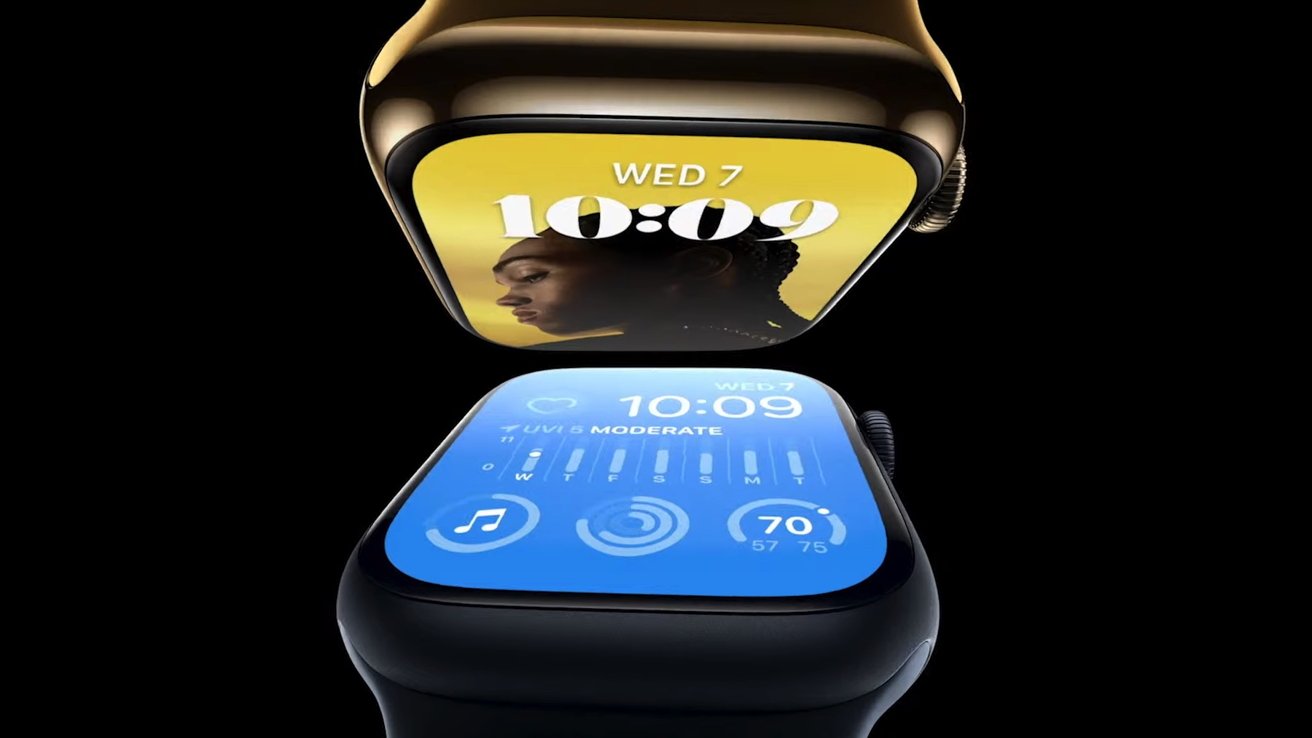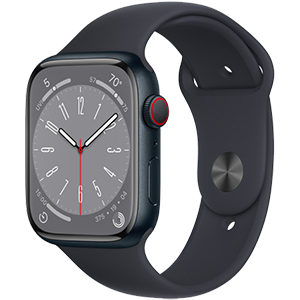The newly announced Apple Watch Series 8 is an update with a focus on speed improvements and fitness.
Rumors pointed to a significant Apple Watch redesign for the previous two generations. Instead, for 2022, Apple iterated on the existing design with minor changes that enhanced the overall experience.
The Apple Watch Series 8 could easily be mistaken for the Apple Watch Series 7 that came before it. The curved chassis, Digital Crown, speaker cutouts, and edge-to-edge display are identical.
New health capabilities
The exterior design didn't need to change to accommodate the new body temperature sensor. It uses the existing sensor's contact with skin to take periodic measurements to observe temperature trends.
Similar to the other health sensors on Apple Watch, the temperature sensor isn't meant to replace dedicated medical equipment. Instead, it will alert the user if a trend indicates health issues.
Specifically, Apple highlighted women's health as part of the announcement. With a two-sensor design— one sensor on the back of the watch near the skin, and another under the display— it samples the wrist temperature during sleep every five seconds to measure changes.
People can view nightly shifts in baseline temperature inside the Health app. These can be caused by exercise, illness, or even jet lag.
Women can receive ovulation estimates with the temperature sensor, a helpful feature for family planning. Temperature sensing also enables improved period predictions, again found within the Health app.
With iOS 16 and watchOS 9, the Cycle Tracking app pushes a notification to show possible deviations in a cycle, such as irregular, infrequent, or prolonged periods, and persistent spotting. These can be symptoms of underlying health conditions.
Crash Detection
A new emergency feature can detect car crashes using a more powerful gyroscope and accelerometer on Apple Watch. In addition to motion data, Crash Detection uses the barometer, GPS, and the microphone on iPhone as inputs to detect severe crashes.
When it detects a severe car crash, it checks on the user and dials emergency services if the person is unresponsive after a 10-second countdown. Emergency responders will receive the user's device location, which is also shared with the user's emergency contacts.
Low power mode
A new Low Power Mode can give up to 36 hours of battery life on a single charge. It disables certain features, such as the always-on display. It temporarily disables or limits certain sensors and features, including the Always-On Retina display, workout autostart, heart health notifications, and more.
The feature is built into watchOS 9 instead of limited to the Apple Watch Series 8, available on the Apple Watch Series 4 and later.
When Low Power Mode is not enabled, the Apple Watch Series 8 offers users all-day 18-hour battery life.
Price & availability
Aluminum color options include Midnight, Starlight, Silver, and (PRODUCT)RED. Stainless steel sticks with Silver, Graphite, and Gold. Apple customers can purchase it for $399 for GPS and $499 for the cellular option.
Apple Watch Series 8 and Apple Watch SE are available to order today, with availability beginning Friday, September 16.
 Wesley Hilliard
Wesley Hilliard








-m.jpg)






 Charles Martin
Charles Martin

 Malcolm Owen
Malcolm Owen
 William Gallagher
William Gallagher
 Christine McKee
Christine McKee
 Marko Zivkovic
Marko Zivkovic
 Mike Wuerthele
Mike Wuerthele










20 Comments
You know Apple, men wear the watch too. Just a thought after hearing about the temperature sensor.
Wow, that's disappointing. Guess I'm not upgrading my Watch this year.
As a physician, I have been very impressed with the Apple Watch. I love the idea of Apple adding to the sensor platform to monitor health parameters.
Physicians call vital signs “vital” for a reason. Simple parameters such as temperature, blood pressure, heart rate, breathing rate, and oxygen levels convey critical information.
Apple is gradually adding the ability to nearly continuously monitor vital signs. They also monitor additional information, such as heart rhythm. What makes Apple stand out is the high quality of the measurements and Apple’s development of extremely clever algorithms to extrapolate additional information from the data they measure, far more than the sum of the parts. When they are able to add blood pressure monitoring, glucose monitoring, etc., we will see something pretty amazing as the result. I can imagine Siri being able to tell you that you are “diagnose” dehydration, respiratory/lung problems, severe infection (sepsis), sleep apnea, seizures, orthostatic hypotension (blood pressure dropping when you stand up), early Parkinson‘a disease, and that’s just the tip of the iceberg. Each sensor they add could increase the potential issues that the watch/iPhone could detect in an exponential fashion.
TL;DR - Doctors love this crap!